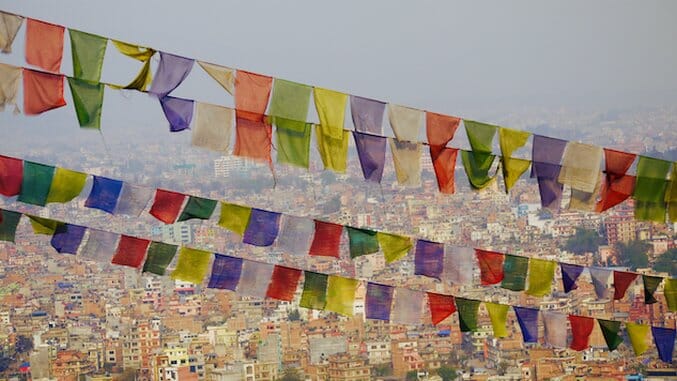Checklist: Kathmandu, Nepal
Photos by Max Bonem
Between The Himalayas and one of the world’s greatest collections of Buddhist stupas and temples, Nepal offers something unique that just can’t be found anywhere else. As the nation’s capital, though, Kathmandu is the hub for Nepal’s momentum into the future and away from its troubled and violent past. Still reeling from the devastating 2015 earthquake, Kathmandu continues to make progress, albeit slower than most would like. It’s dizzying, loud, and one of the haziest places on Earth, but it’s sure to make an impression on anyone who visits.
1. Thamel
When visiting Kathmandu, you’ll more than likely be staying in Thamel, Kathmandu’s tourist and backpacker epicenter. Littered with clothing and souvenir shops, restaurants, cafes, and bars, Thamel is full of vendors who enthusiastically lure you into their establishments. The streets are narrower and more crowded; they are less designed for cars and motorcycles and more for pedestrians and bicycles. Spend an afternoon simply getting lost down alleyways and stumbling upon remnants from the era before contact was made with the west. Thamel might play home to travelers, but it’s still one of the oldest corners of Kathmandu.
2. Swayambhunath Stupa (Monkey Temple)

Located high above Kathmandu’s dusty and congested streets, Swayambhunath, also known simply as the Monkey Temple, is one of the highest landmarks in Kathmandu and offers some of the best views of the city and surrounding valley. Sure, you have to climb a few hundred steps to reach the stupa itself, but in a city that never seems to relent, it might be just the break from the chaos that you need. Damaged in the 2015 earthquake, most of the architecture is still intact and continues to attract tourists and those making the Buddhist pilgrimage en masse. Once you’ve made it to the top, vendors will do their best to attract you to their stalls, offering everything from prayer flags to jewelry to traditional thangka paintings, but it’s the stupa itself that will draw you to the summit.
3. Durbar Square

Many cities surrounding (or now enveloped by) Kathmandu possess their own Durbar Squares, but Kathmandu’s has a history unto itself that still resonates today. Dating back to the 15th century, Durbar Square once housed the Nepali royal palaces before contact with the West had been established. These days though, Durbar Square acts as a site for demonstrations, rallies, and the yearly Hindu Holi festival (pictured), which celebrates the beginning of spring by dousing friends and strangers alike with colorful dyes and water.
4. Patan
One of the Kathmandu Valley’s three ancient cities, Patan has been consumed by Kathmandu as the city itself continues to spread in every direction. Only a three-mile walk from Thamel, Patan seems like another world, calmer and quieter than its neighbor to the north, and the walk there will take you past one of Nepal’s many post-earthquake refugee camps, a haunting reminder of the 2015 disaster that still looms in the dusty air. Patan’s Durbar Square is home to a number of temples in various states of disrepair, but what is left gives you a brief taste of what Patan might’ve looked like during its pre-modernization heyday.
-

-

-

-

-

-

-

-

-

-

-

-

-

-

-

-

-

-

-

-

-

-

-

-

-

-

-

-

-

-

-

-

-

-

-

-

-

-

-

-










































